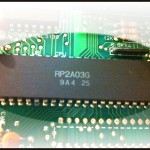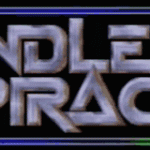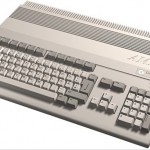The vast majority of us have been horrible people at some point or another and pirated software or at least emulated games on our computers at least once in our lives. Getting past the morality of it, it’s safe to say we all know the process of downloading an installer alongside a key generator that would help us get to our elicit activities, or an emulator with which to play the ROMs of import games we didn’t get in the states.
If you’re one of those ilk, then you are likely familiar with keygen music, or at least have had an encounter with the niche genre but didn’t pay it much mind. Maybe it was simply an annoyance on the way towards the goal of cracking your ill-gotten software, or maybe it’s a fond memory of the age of Napster, Limewire and pre-torrent times. Having attended MAGFest recently and become more interested in the demoscene, I’ve decided to revisit this.
So what is keygen music?
Also known as “cracktros”, or “crack intros”, there is a history behind the fun chiptune diddies that often accompanied our forays into casual piracy. It began in the demoscene, as the musical offshoot of the hobby of creating demos to show off one’s visual and creative prowess on the computer prior to the advent of more sophisticated techniques seen these days. Many individuals of the demoscene would dabble in the art of software cracking once the practice of filesharing began (Even prior to Napster et.all when people would simply download files to floppy and share with one another). It wasn’t enough to simply crack software coding in order to remove or alter copyright protections and gain the ability to share the software or video game files; programmers wanted to put their stamp on these cracks and claim credit. Thus, crackers would create little musical demos to include, either within the cracked program itself prior to its boot up, or later, including them within the cracking program used to jailbreak the software. These were “cracktros”, and later when key generators were popular with filesharing and torrenting, were also known as “keygen music”.
So here you had progammers and demoscene artists making their mark on the underground filesharing scene with these cracktros, which would manifest in self-created chiptune music with varying degrees of visual programming. It was like the graffiti of the cracking scene; a group would sometimes crack whole swaths of video game files or programs and become demo celebrities by advertising themselves and their BBS (Bulletin Board Systems, for you kiddies who might not have been around in those days). By doing this, crack artists could even grow communities and connect with fellow demoscene artists, and the art could continue to grow and evolve. It could be said that this underground art form helped popularize today’s chip music scene.
Personally, I believe my first memorable introduction to keygen music came when I required a emulator to play Castlevania: Aria of Sorrow after it first came out (I hadn’t gotten a Gameboy SP yet, but eventually would and bought the game outright like as good girl). Booting up the particular emulator I’d downloaded prior to starting the Rom itself started a fun cracktro by group Eurasia with an animated visual display and a ridiculously catchy chiptune track that I would often just sit and listen to by itself for several minutes before even starting the game. I had no idea at the time that this was just one of an entire community’s-worth of similar unique chiptune-fueled intros, but I liked it and credit it as my first real interest in chip music. Later forays into using keygens would introduce me top several other favorite cracktros by demo groups.
There are actual archives of keygen and cracktro music still on the web today. KeyGenMusic.net hosts a database of some of the most well-known crack groups and what cracktros they made for what programs.
The demoscene and the keygen music scene that became a subset of it has today helped evolve into in the chip music genre as a whole. Today’s chiptune and chip music community continues to grow, and the likelihood that many current and future chip artists might have first been introduced to chip music through keygens and cracktros is a likely one. The keygen scene preceded the chip music scene, and thus can be seen as a middle child between demo music and the current chiptune scene. Either way, at least for myself, it is a sort of milestone in my digital life in a way, as well as a gateway into chip music as I know it today that I remember fondly.
What are your experiences with keygen music and cracktros? What illicit activities brought your attention to these little chip ditties? Let us know! Also be sure to check out this 8-hour cracktros playlist our writer Shawn found for a taste of chip nostalgia goodness.
Disclaimer: Original Sound Version does not endorse software piracy for the sake of listening to cracktros, no matter how cool their music might be.
Tags: Chip Music, Cracktros, Demo Scene, Features, Keygen Music








































